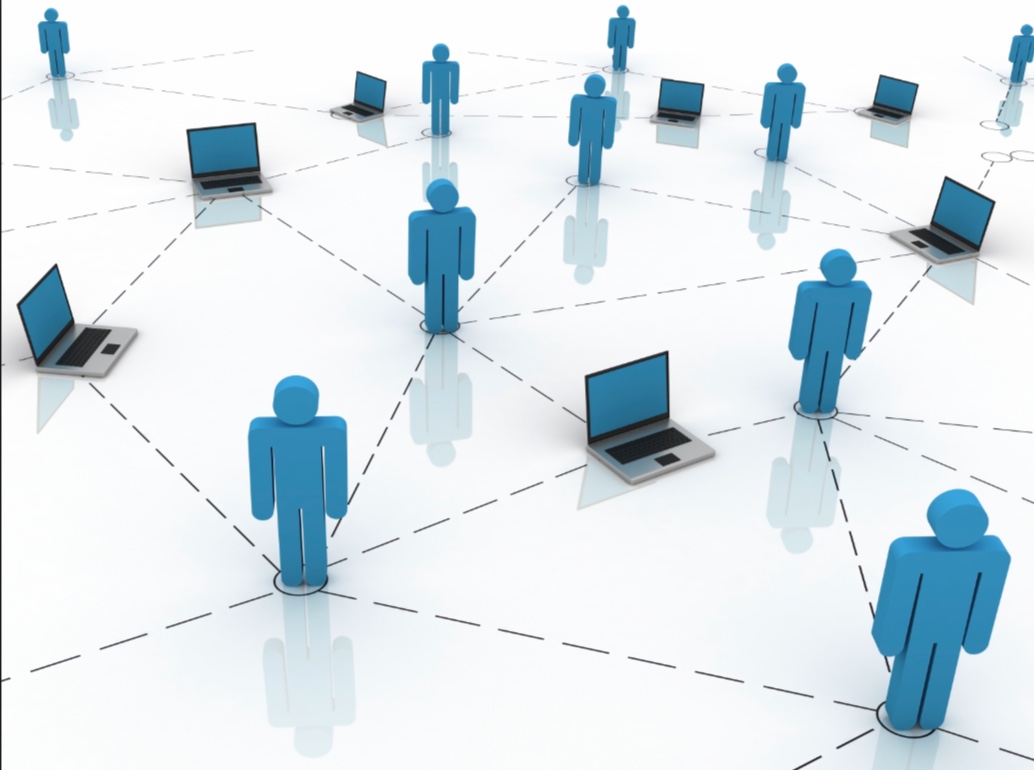
George Gilder, in his latest book, Life After Google: The Fall of the Big Data and the Rise of the Blockchain Economy, effectively argues that our current big data IT world (he uses Google as the metaphor and leading provider) is not here to stay because of inherent flaws, the most significant being cyber-insecurity and the associated loss of human privacy. George Gilder is an American writer, investor, 20-book author, and techno-utopian advocate. Despite it’s current hype, some may ask, what is blockchain?
“A blockchain, originally block chain, is a growing list of records, called blocks, which are linked using cryptography. Each block contains a cryptographic hash of the previous block, a timestamp, and transaction data (generally represented as a merkle tree root hash).
By design, a blockchain is resistant to modification of the data. It is ‘an open, distributed ledger that can record transactions between two parties efficiently and in a verifiable and permanent way’.”
Wikipedia

Most people associate blockchain with the cryptocurrency Bitcoin which is a new form of electronic cash. Bitcoin is a decentralized digital currency designed to bypass central banks and Nation State fiat monies undergirding today’s global financial transactions. Unlike fiat currencies, Bitcoin transactions are verified by network nodes through cryptography, and recorded in a public distributed ledger called a blockchain. Bitcoin was invented by an unknown person or group of people using the name Satoshi Nakamoto and released as open-source software in 2009.

Although several cryptocurrencies have been started since Bitcoin first stood up, the real hype and interest surrounding blockchain is the possibility of truly distributed immutable ledgers that offer the possibility of transparent ledgers, for all business types, without the need for continuous verifiable auditing, and without the possibility of ledger fraud and related crime.
Gilder’s concern about big data and internet security leads him to predict that blockchain and immutable ledgers will become the technical foundation of a future he calls the “cryptocosm.”
“Google’s security foibles, its “aggregate and advertise” model, its avoidance of price signals, its vertical silos of customer data, and its visions of machine mind are unlikely to survive the root-and-branch revolution of distributed peer-to-peer technology, which I call the ‘cryptocosm’.”
Gilder, George. Life After Google: The Fall of Big Data and the Rise of the Blockchain Economy (Kindle Locations 723-727).
While the free and/or low cost IT services we currently use on the internet have provided unprecedented access to information for anyone able to access it through computers and mobile devices, it hasn’t really been free when one considers the massive loss of personal privacy, intellectual property, and the growing effectiveness of cybercrime. In addition, as Gilder points out, free ultimately robs us of time, our ultimate immutable resource.
Even more interesting to me is his comparison of Marxism and the failed twentieth-century socialist governments that perpetrated the slaughter of over 100-million of their citizens in the name of rational centralized government planning. While Gilder acknowledges the brilliance of Silicon Valley leaders such as Google founders, Sergey Brin and Larry Page, he also argues that modern centralized big data systems are the neo-Marxism of our day.

“Marx was typical of intellectuals in imagining that his own epoch was the final stage of human history. William F. Buckley used to call it an immanentized eschaton, a belief the “last things” were taking place in one’s own time. The neo-Marxism of today’s Silicon Valley titans repeats the error of the old Marxists in its belief that today’s technology—not steam and electricity, but silicon microchips, artificial intelligence, machine learning, cloud computing, algorithmic biology, and robotics—is the definitive human achievement. The algorithmic eschaton renders obsolete not only human labor but the human mind as well.”
Gilder, George. Life After Google, Kindle Locations 224-229
Alternately Gilder argues, based upon Shannon’s information theory, that information is surprise and inventive human minds will always provide that surprise in a system of economics that rewards surprise. He also doesn’t fear the AI takeover of the human race by machines, as is predicted by Ray Kurzweil’s singularity or Elon Musk’s AI fears, because machines are, by definition, deterministic and will never achieve the non-determinism of human consciousness that provides our human ability to invent surprise. Inventing surprise or knowledge is Gilder’s definition of economy.
To bring this back to Naval and DoD practicalities, the near-term value of this discussion is that blockchain, as an enabler of immutable distributed ledgers, offers a fundamental transformation of today’s unsecured DoD IT architecture. Working with this emerging technology, provides DoD an opportunity to start building the security stepping stones needed to transform today’s cyber-insecurity into tomorrow’s National Security cryptocosm. To that end, consider the value of secure distributed ledgers for challenges such as: encryption key distribution; supply chain logistics; military medical records management; weapon and nuclear material tracking; human resource skills and assignment tracking; and, perhaps even situation awareness track management.

One thing is certain! Without a fundamental improvement in IT cybersecurity across the DoD, the future of warfare is up for grabs with our near-peer competitors, and the solution will be more about proven results than Information Assurance process driven activities like Risk Management Framework.

I saw a very interesting Ad about Biometrics and using your Identity to be “Cleared” (https://www.clearme.com/) whether you are entering a sporting event or taking a cruise ship you can enter via your Biometric ID. They claim to “match your fingerprints and irises to your unique code every time you check in” and to “transforms your biometrics into an encrypted code”. Here is where Blockchain could also be used. For obvious reasons they didn’t reveal anything about their backend architecture.
Good points JR… as you know, no matter how good the biometrics get we still need a secure architecture underneath them to make them effective… secure distributed ledgers that can’t be undermined would seem like one way to start addressing this… hence the interest in blockchain…
Wider use of crypto-secured distributed ledgers will not diminish the value of Google to its users. If I want to know who in Minnesota sells wombats, blockchain will not help me, and ‘I will pay a price, whether cash or loss of privacy, to get that information. Google’s business model would be undermined if everybody browsed anonymously, but blockchains are not needed for that.
Great to hear from you Bruce. Your points are good, the need for search is not going away. Interestingly Gilder points out that Google’s business model is already being taxed because why would you click on Google first if you know that all of the products you want are on Amazon. Because of that shift, Google’s advertisers are migrating to Amazon and leaving the open the question of who pays for Google’s search for non-product things that they provide for free…
Marv,
Fascinating post and book. One might imagine our ship board computing a “strategic high ground” mapping the resumption of a more distributed compute model as Gilder discusses. Thanks for the insights!
Marv,
The authenticity that blockchain confers does indeed open (and broaden) new things. In the commercial maritime world, there is increasing use of blockchain to keep track of containers from end-to-end. This is mostly for commercial accountability reasons (the container passes through lots of hands, making QA problematic). But think about it from a customs point of view…
Now think about some of the other applications that have appeared in internet-space over the last few years. How many of them have any authenticity attached to them? Something like zero (unless you count signed e-mail, then the answer is something like one). Facebook and Twitter have no way to authenticate the data that is posted and no way for a reader of that data to verify authenticity. The distributive characteristic of blockchain is novel but the need for authenticity (and solutions for that need) is not. Internet applications need inherent authenticity — show me situations where that requirement does not exist.
A good deal of the confusion is that public key solutions cleanly divide authenticity (digital signature) and confidentiality (encryption) into two different camps. One can digitally sign a piece of e-mail leaving it entirely readable, whether or not the reader verifies the signature. Ironically, the inverse is that one can encrypt e-mail but leave it unsigned, and it is not authenticated.
Why this thinking is important. Recall paper checks — there’s nothing confidential about the check — everything is right there on the face. What’s important is the authenticity — provided by your signature. Clean. But wait, now look at credit cards — over the years the credit card companies have been trying to use confidentiality solutions to solve authenticity problems … and wondering why they don’t work well.
Why this thinking is important. Our emergency services are rapidly migrating to internet-supported communications (see FirstNet) and internet applications. Consider the incident commander dealing with a wildfire. He determines that an area needs to be evacuated and issues a message (e-mail?) to that effect. How can anyone tell if it’s bogus or not? (If you’re not sensitive enough to this let me introduce you to a few of my former USCG friends who’ve chased too many SAR false alarms).
Blockchain may be a step toward sorting this confusion out.
Rex, good comments as always. As Gilder’s book points out, the cryptocosm he envisions is one where we all own our own data, share it with only those we choose, and the transactions are transparent for all to see but for no one to spoof. At the same time the goods in the containers you mention, will all be blockchained to push away the bad guys and create immutable tracking for everything that moves on the planet.
FWIW, blockchains themselves do nothing to ensure that data is “authentic”. It’s just as easy to store incorrect information on a blockchain as it is in any datastore.
https://bitcoinist.com/leonardo-da-vinci-mona-lisa-blockchain-verisart/
Marv, Agree on “immutable ledger” security and legitimacy of transaction that blockchain provides. As the audience have mentioned, many applications and implementations stand to benefit.
To me, unknown aspects are what could be deciphered from transaction signatures? What could be inferred from certain transactions and what would the need be? How could a transaction made in error be reconciled by Machine Intel? Can Quantum Comp take it to next level?
Thanks Krunal for the good comments. Nice thing about transaction errors is that all remains transparent as they are fixed. Quantum computing is working to determine what algorithms will best take advantage of q computing… early advantages are true quantum random number generators… More on that next post.
Marv, very interesting discussion and I am a big fan of George Guilder since his influence on Ronald Reagan in the 80’s. I still have a lot to learn in this area. As you know, distributed computing has been a passion of mine for years, especially applied to distributed data fusion and track management. We have been looking at a lot of possibilities in this area for a while using the concept of distributed “fuselets” and technologies like map-reduce and Hadoop. Blockchain brings in new possibilities especially for distributed databases and algorithms, security, and, perhaps, shared-nothing architectures (SN) for resiliency and other benefits. I am looking forward to further discussion. Thanks Marv.